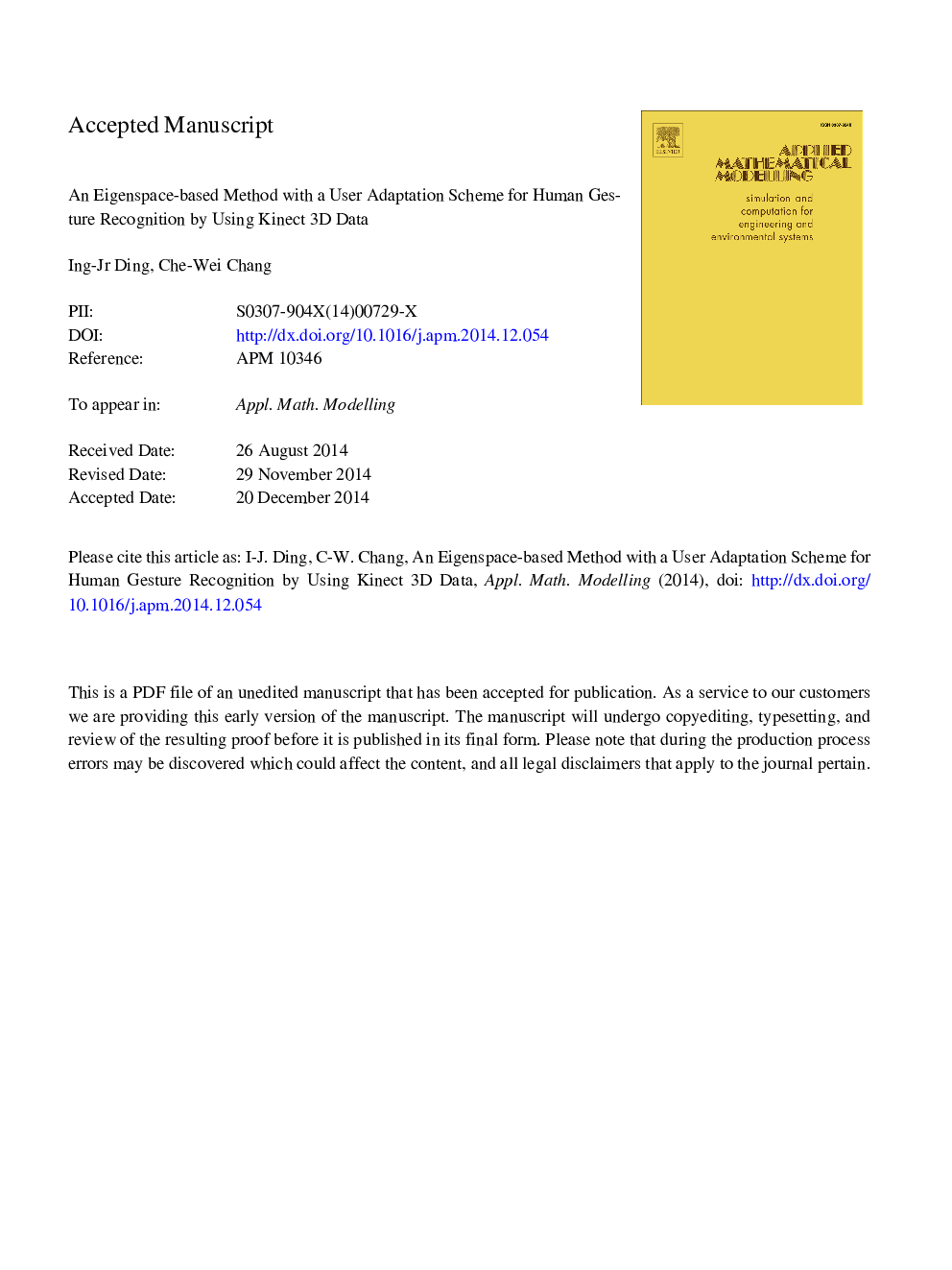| Article ID | Journal | Published Year | Pages | File Type |
|---|---|---|---|---|
| 10677642 | Applied Mathematical Modelling | 2015 | 13 Pages |
Abstract
A Kinect sensor has been used in several applications and is considered a novel interaction interface between humans and computers because of the simplicity of the acquired image data. The sensing image data obtained using the Kinect sensor includes depth measurement information and, therefore, the (x, y, z)-coordinates of 3D objects. This study proposes an eigenspace-based method for recognizing human gestures by using Kinect 3D data. The developed approach, called Eigen3Dgesture, involves employing principal component analysis to derive significant Eigen3Dgestures possessing the most critical information from Kinect 3D data. To facilitate establishing the eigenspace of Kinect 3D data, this study developed a frame filling algorithm before performing eigenspace construction. To enhance Eigen3Dgesture and the performance of the constructed eigenspace of Kinect 3D data, a user adaptation method for Eigen3Dgesture was developed. Fourteen classes of active gestures were subjected to human gesture recognition experiments. The experimental results demonstrate the superiority of Eigen3Dgesture with user adaptation.
Related Topics
Physical Sciences and Engineering
Engineering
Computational Mechanics
Authors
Ing-Jr Ding, Che-Wei Chang,
